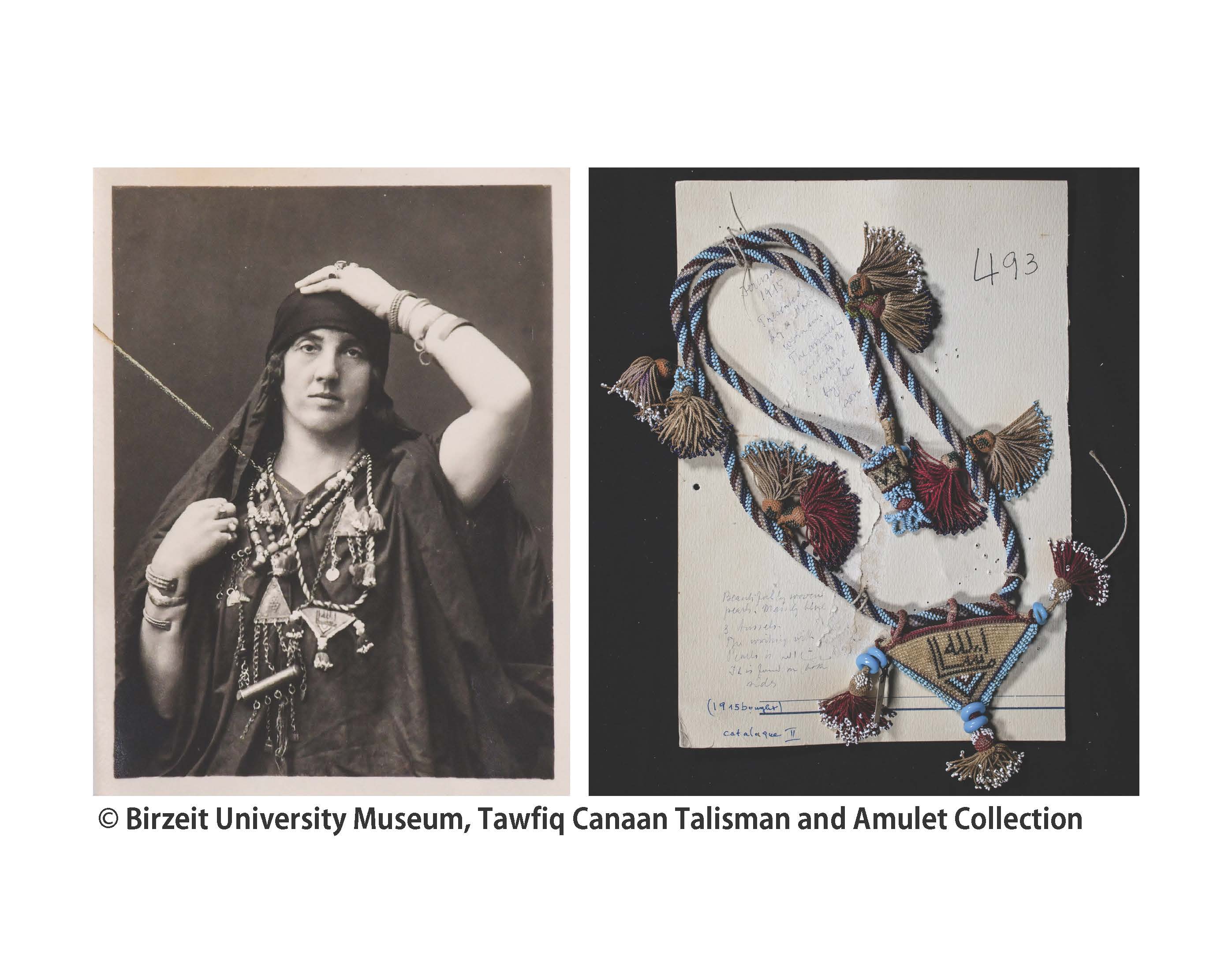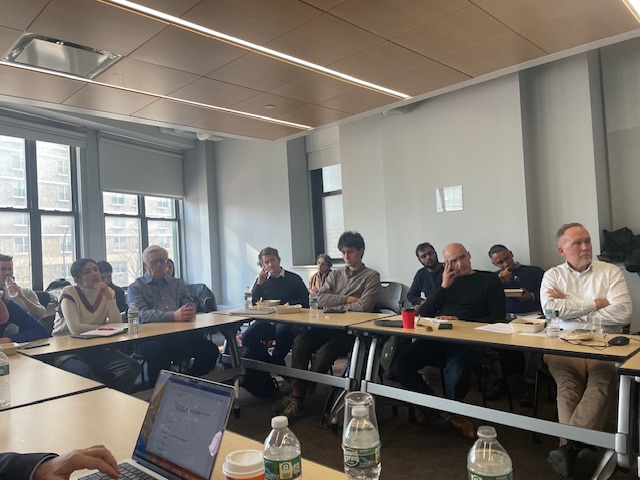
Dr. Tawfiq Canaan (1882-1964) was a Palestinian physician, scholar, and collector best known during his lifetime for his public health advocacy and pioneering research in bacteriology. Today, Canaan is mostly remembered for his elegant writing on Palestinian folklore and ‘superstition’. Canaan collected objects and recorded narratives that document Palestinian entanglements with and expectations from preternatural beings, objects, animals, and plants in a landscape offering gifts and presenting demands upon different bodies and communities. This Palestine was being eclipsed by modern encroachments to which Canaan was simultaneously a keen participant, advocate, and challenger.
Dr. Canaan’s unique collection of several hundred talismanic objects survived the burning and looting of his Jerusalem house, library, and clinic that accompanied the Nakba in 1948. Along with Canaan’s writings this collection, housed today at the Birzeit University Museum, provides a unique lens for tracing Palestinian landscapes and material histories prior to the violence of displacement and dispossession. By critically attending to Canaan’s work and collection, this workshop will investigate novel understandings of the healing and apotropaic technologies present in his archive while exploring the significance of such objects towards imagining Palestinian pasts, presents, and futures.
James Grehan
Title: What Did Peasants Want? Hints from the Ethnography of Tawfiq Canaan
Abstract: Tawfiq Canaan produced a remarkable body of ethnographic research on the Palestinian countryside under the British mandate. Though he ostensibly wrote about religious practices and beliefs, his work actually touches on much broader aspects of rural life, sometimes in unexpected ways. In light of this research, which remains invaluable, we can begin to ask whether the culture of the countryside matched models of ‘Islamic society’ (or ‘Islamicate society’) that so much modern scholarship has taught us to expect. If we track peasants’ customs and habits, what precisely do they tell us about themselves?
Bio: James Grehan is professor of history at Portland State University. He writes and teaches about the early modern and modern Middle East, with a specialty in social and cultural history. His latest book, soon to be published, is a study of manners and sociability in the eighteenth-century Ottoman Empire.
Salim Tamari
Title: Canaan’s Saints and Sanctuaries and the Limits of Communal Boundaries in the Shrine of Simon the Just
Abstract: Tawfiq Canaan's Mohammedan Saints and Sanctuaries in Palestine (1927) provides us with an important ethnographic account of shrines and maqamat as locations for physical healing, mental catharsis and communal solidarity. In this presentation I will examine the shrine of Simon the Just in north Jerusalem as a site of communal shared space in the first half of the 20th century. Simon the Just, a sage in the Jewish tradition, was celebrated as a local saint by Jerusalem Muslims during shat-hat al-Yahudiyya even though he does not appear in the Qur’an or any Muslim tradition. Unlike Moses (Musa), Jacob (Ya‘qub), Reuven (Rubin), Simon the Just has not been Islamicized. I examine here the work of Canaan with that of the musician/ethnographer Wasif Jawhariyyeh. Like Canaan, Wasif gives a vivid description of the syncretic celebration by Jews, Muslims, and local Christians of the spring festival of al-Yahudiyya. The term al-Yahudiyya is significant since it distinguishes the site’s Jewish origins without necessarily establishing it as an exclusively Jewish festival. This should be contrasted to al-Nabi Musa, al-Nabi Rubin, and al-Nabi Ayyub festivals – all celebrating Old Testament prophets, and in which Jews and Christians actively participated, but whose patrons were mainly Muslims. The synergy of these religious ceremonies were not only formal attestations of coexistence between the three communities, but they were also shared communal events. The Jewish performers in the event honoring Simon the Just were also Jawhariyyeh’s partners in a “secular” music band that celebrated weddings in the Old City. And though events like the Simon the Just festival were neither denominational nor sectarian, to describe them as “secular” is problematic given their ritually religious character.
Bio: Salim Tamari is a social historian and urbanist. Prof. Tamari is Professor of Sociology (Emeritus) at Birzeit University, Research Associate at the Institute for Palestine Studies, and editor of The Jerusalem Quarterly. He has been a visiting professor at Ca Foscari University (Venice), UC Berkeley, Georgetown University (Washington), New York University, Cornell University (Ithaca), University of Chicago, Harvard University (Cambridge) and Columbia University (New York). Among his many publications are Mountain Against the Sea: A Conflicted Modernity (2008); The Storyteller of Jerusalem: The Life and Times of Wasif Jawhariyyeh 1904-1948 (with Issam Nassar, 2018); Year of the Locust: Erasure of the Ottoman Era in Palestine (2011); Revolution and Counter Revolution in Nablus, 1908 (in Arabic); The Great War and the Remaking of Palestine (2018: UC Press), winner of the Middle East Monitor Prize; Landed Property and Public Endowments in Jerusalem (with Munir Fakhr Ed Din, 2018); Camera Palestina: Photography and the Sensual Impulse (UC Press, forthcoming).
Rana Barakat
Title: Tawfiq Canaan and Ethnographic Collections: How to Unsettle The Museum
Abstract: This talk shall cover both the work of a Palestinian historian and story teller and the pedagogical practice in a university museum in Palestine. This intervention shall hopefully ask: How do you deal with the complicated past of ethnography in Palestine though reading Canaan as a figure and his collections as vital material in our ongoing present?
Bio: Rana Barakat is an Associate Professor of History at Birzeit University in Palestine and director of the BZU Museum. Her current book monograph titled "Ongoing Return: Storytelling, Resistance, and Museumfication in Palestine" is forthcoming with the University of North Carolina Press for the "Critical Indigeneities" series. This book advances an indigenous understanding of time, space, and memory in Palestine by focusing on the details of the people and place of Lifta village over time.
Khaled Malas
Title: Osseous Efficacies: Reading ovine scapulae in the Tawfik Canaan Collection
Abstract: The Birzeit University Museum preserves at least four inscribed ovine scapulae collected in the early twentieth century by Dr. Tawfik Canaan. Inscribed in black ink on the broad flat surface of the bone, the scapulae display compositions of disconnected letters and geometric forms. Canaan’s writings describe how such objects were deployed by either being suspended from specific trees or by ingestion via a broth, illuminating the role of efficacious writing in apotropaic and medicinal practices in early twentieth century Palestine. This presentation will situate the talismanic scapulae as lenses towards examining an already disappearing Palestinian landscape, one in which humans and non-humans are bound in purposeful entanglements.
Bio: Khaled Malas is an architect and art historian. At NYU’s Institute of Fine Arts, he is writing a dissertation on a corpus of medieval magico-medicinal bowls that bear a depiction of the Kaaba.
Beshara Doumani
Bio: Beshara Doumani is the Mahmoud Darwish Chair for Palestinian Studies at Brown University and the former President of Birzeit University in Palestine. His research focuses on the social histories of peoples, places, and time periods marginalized by mainstream scholarship on the early modern and modern Middle East. He also writes on academic freedom and the Palestinian condition. He is currently working on a history of the Palestinians through the social life of stone.




